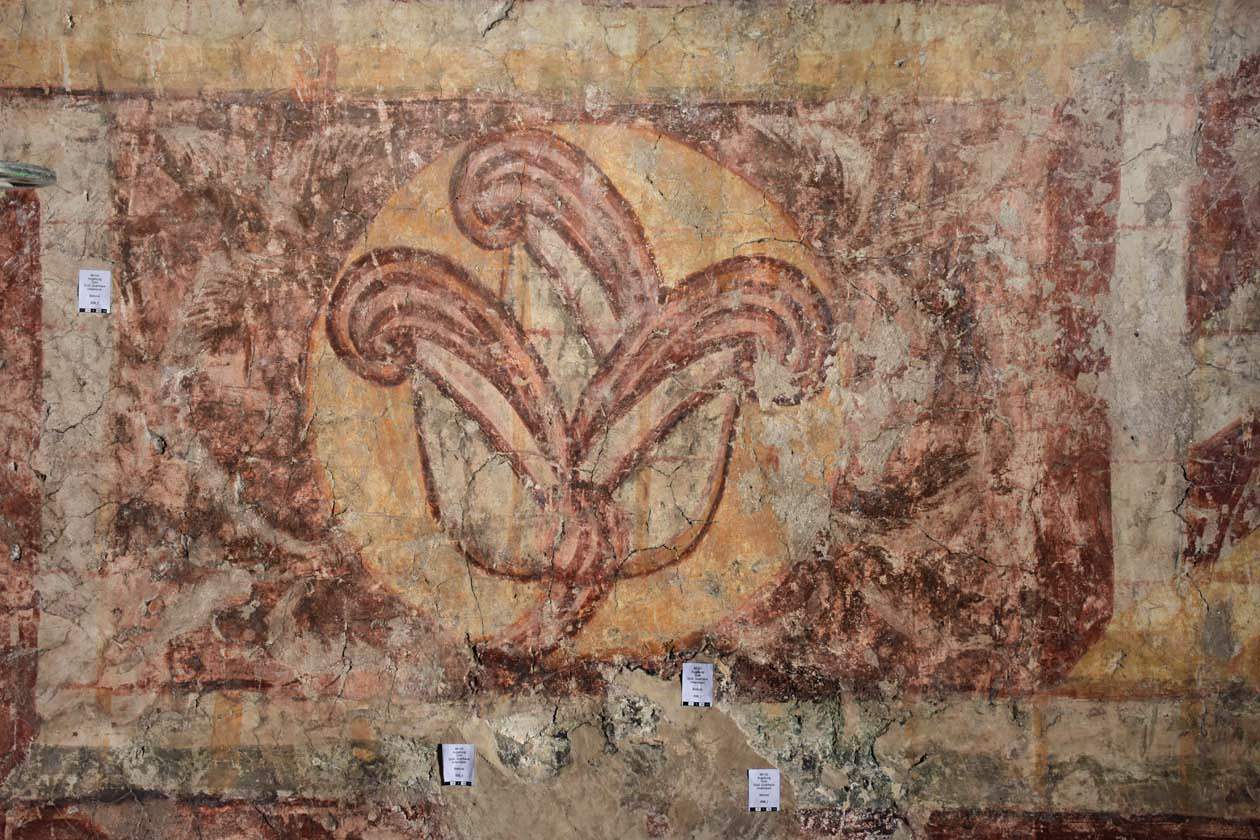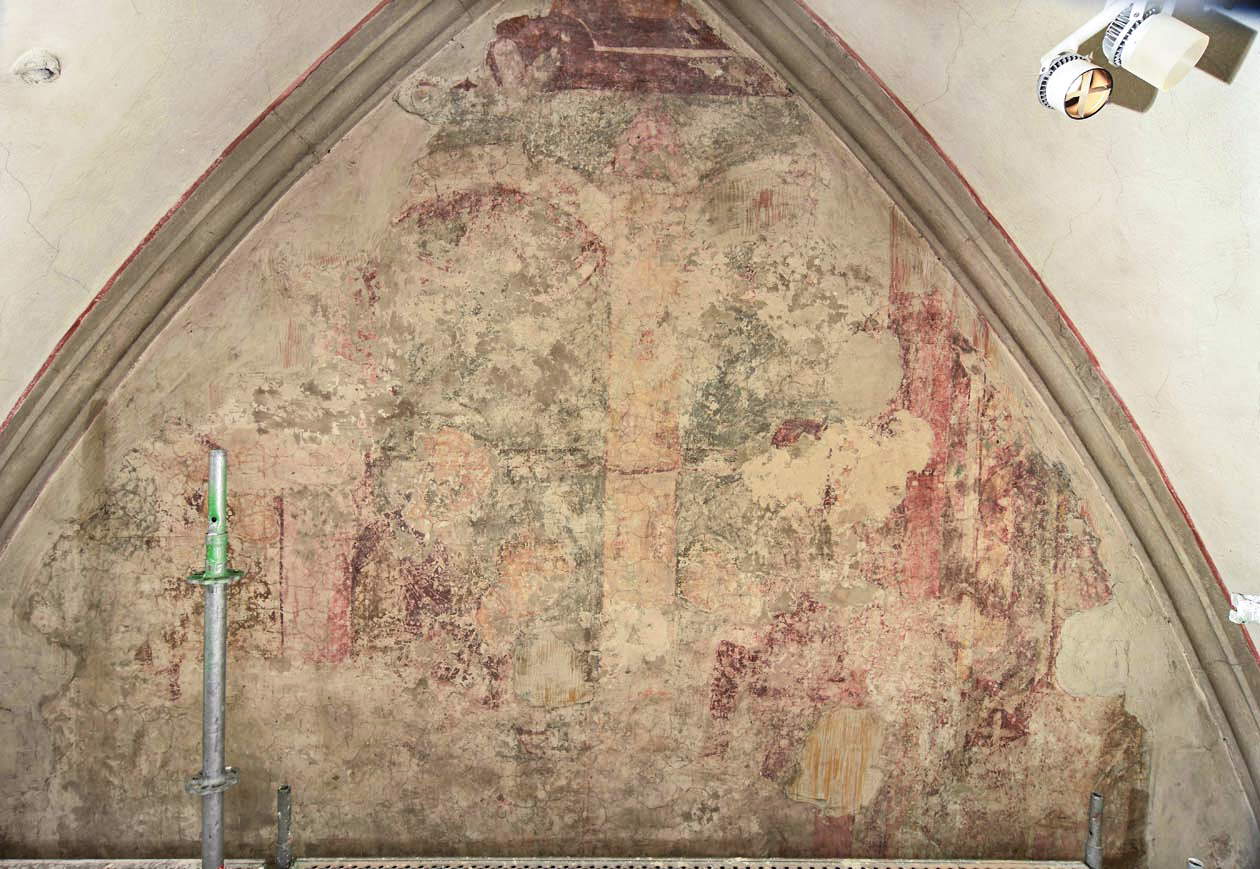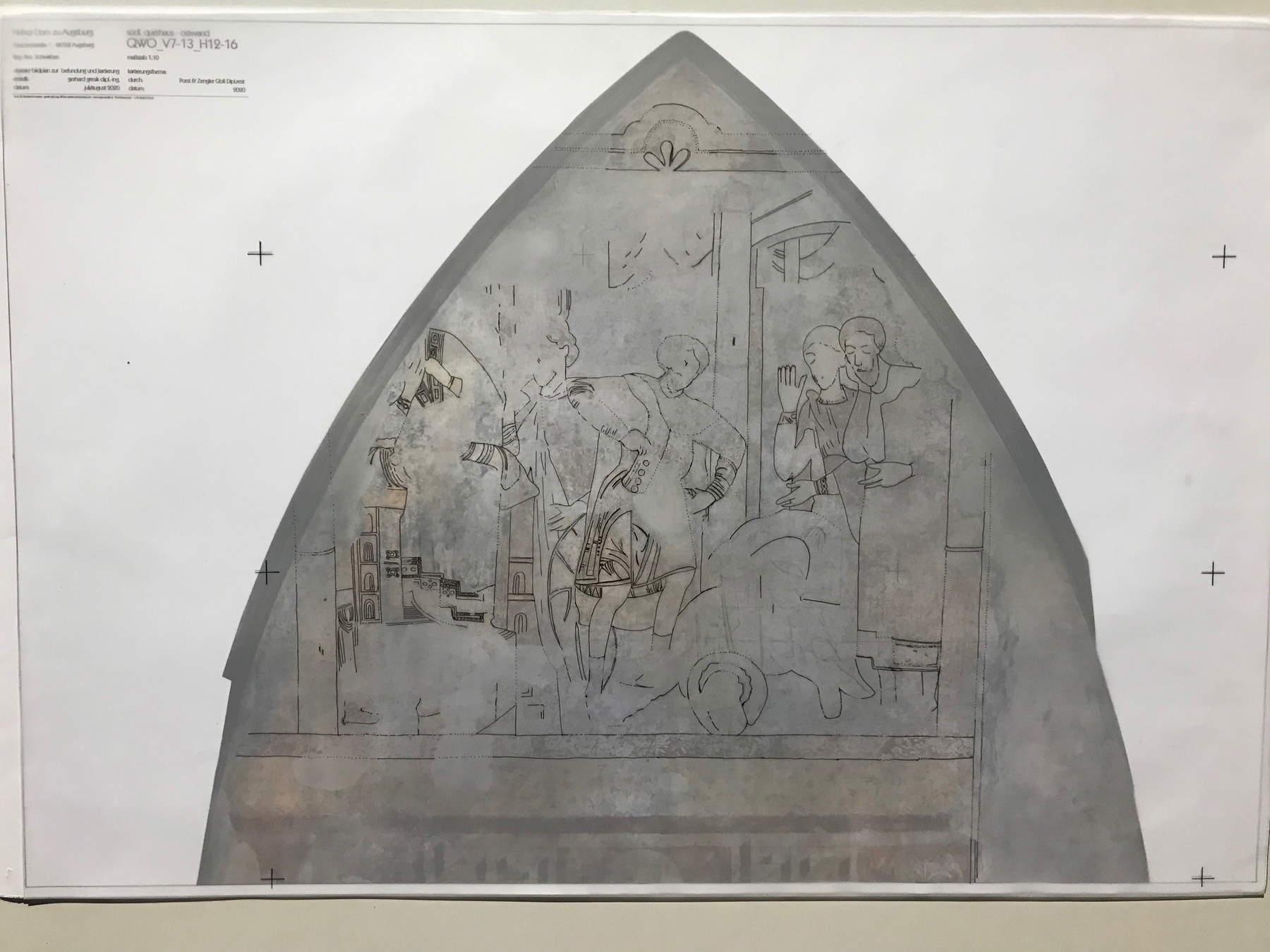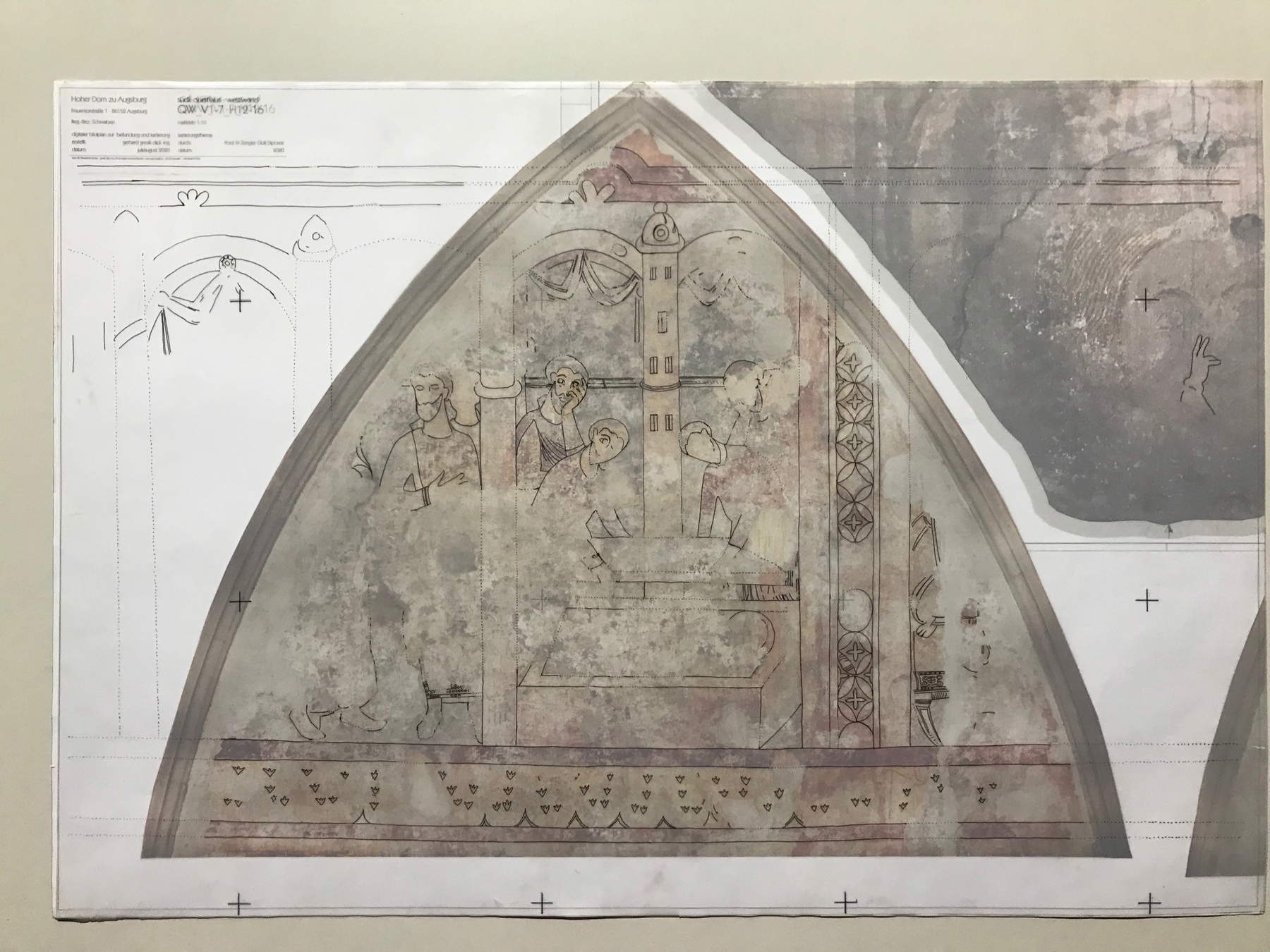In the Cathedral of Aug sburg, Germany, new details are emerging about some frescoes that had long been known to exist: in particular, the paintings have been deemed datable to around 1,000 years ago, and consequently may be the oldest known evidence of Christian art north of the Alps.
Announcing the study in December was the Bayerisches Landesamt für Denkmal Pflege, Bavaria’s heritage protection office. The frescoes are located on the walls of the south transept of the cathedral, and would date from the first decade of the 11th century: they are two scenes relating to the Stories of St. John the Baptist, depicting the beheading and burial of the saint. The works were in a very poor state of preservation: discovered in 1930 (they were in fact whitewashed at an unspecified time), until now they had never been the subject of a study aimed at trying to understand their possible dating. Only in 2009, during some restoration work in the part of the church where the frescoes are located, were traces of color found that brought these paintings back to the attention of scholars. The analysis carried out in 2020 was necessary in view of a restoration work (the first on these frescoes) aimed at cleaning and securing the frescoes.
Initially the cycle was larger and also included a scene with the birth of the Baptist and one with the baptism of Christ: episodes destroyed in the 14th century to allow the opening of a Gothic window. There is also a third scene with a subject yet to be identified. Art historians who have studied the works believe they are frescoes made shortly after the construction of Augsburg Cathedral, one of the oldest remaining German churches (it was built around the year 1000), and have noted similarities with the frescoes of St. George’s Church in Oberzell in Reichenau, also from the early 11th century and among the oldest paintings found in the German area.
“The wall paintings that have just been studied,” said Mathias Pfeil, general conservator of the Bayerisches Landesamt für Denkmal Pflege, "are, together with those in Oberzell, the largest known cycle among those created around the year 1000 in the German area. According to Armin Zürn, Supreme Custodian of the Cathedral, “the new acquisitions, especially the discovery of the stories from the life of the Baptist in the south transept, are proof of the magnificence of this place over the centuries.”
The works are now awaiting new studies, but the intervention just conducted, the preservation office pointed out, guarantees the stability of the frescoes of the time, such that in the long term they will not have to undergo new restoration, also because they are located very high up, and therefore less susceptible to the degradation that can be created by the passage of worshippers and visitors.
 |
| One of the decorations |
 |
| The scene with the beheading of the Baptist |
 |
| The scene with the burial of the Baptist |
 |
| Reconstruction of the scene with the beheading of the Baptist |
 |
| Reconstruction of the scene with the burial of the Baptist |
 |
| Germany, some frescoes in Augsburg possibly the oldest Christian work above the Alps |
Warning: the translation into English of the original Italian article was created using automatic tools. We undertake to review all articles, but we do not guarantee the total absence of inaccuracies in the translation due to the program. You can find the original by clicking on the ITA button. If you find any mistake,please contact us.